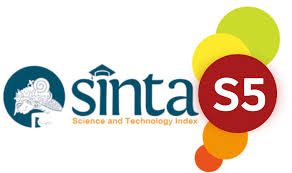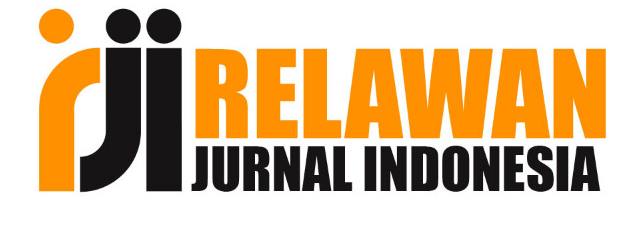The Use of Talking Cards to Promote Students’ Motivation in Speaking Skill Performance
DOI:
https://doi.org/10.36982/jge.v7i1.519Abstrak
Abstract
Due to low motivation of Management students in sharing their ideas orally, a study on using a talking card to promote students’ motivation in speaking skill performance was conducted. A classroom observation method was used in this study. The sample was 40 students of Management Students in the sixth Semester of STIE MuliaDarmaPratama Palembang. The data were obtained by means of observation and questionnaire. Based on the result of the data analysis, it found out that there was a significant difference of students’ willingness in speaking up their opinion after implementing the talking cards. It was also found out that the samples had positive attitude toward the use of talking cards. Most of them were glad to have the cards during the lesson. The students became more enthusiastic as they competed each other to spend the cards soon. They also, subconsciously, developed their 4Cs (Critical thinking and Problem solving, Communication, Collaboration, Creativity and Innovation) as they should find any strategy in order to produce words to argue for their friend’s opinion or simply just to give comment to their friend’s story. Finally, the writer recommends the use of this card in order to promote students’ motivation in speaking as well as develop their 4Cs.
Keywords : speaking skill performance, students’ motivation, talking cards
Â
Abstrak
Karena motivasi rendah siswa Manajemen dalam berbagi ide mereka secara lisan, sebuah penelitian tentang penggunaan talking cards untuk mempromosikan motivasi siswa dalam keterampilan berbicara dilakukan. Metode observasi kelas digunakan dalam penelitian ini. Sampel penelitian adalah 40 mahasiswa Manajemen Mahasiswa semester enam STIE Mulia Darma Pratama Palembang. Data diperoleh dengan cara observasi dan kuesioner. Berdasarkan hasil analisis data, ditemukan bahwa ada perbedaan yang signifikan dari kemauan siswa dalam mengungkapkan pendapat mereka setelah menerapkan kartu berbicara. Itu juga menemukan bahwa sampel memiliki sikap positif terhadap penggunaan talking cards. Sebagian besar dari mereka senang memiliki kartu selama pelajaran. Para siswa menjadi lebih antusias karena mereka saling berkompetisi untuk segera menghabiskan kartu. Mereka juga, tanpa sadar, mengembangkan 4C mereka (Pemikiran Kritis dan Pemecahan masalah, Komunikasi, Kolaborasi, Kreativitas, dan Inovasi) karena mereka harus menemukan strategi apa pun untuk menghasilkan kata-kata untuk memperdebatkan pendapat teman mereka atau hanya sekadar memberi komentar pada kisah teman mereka . Akhirnya, penulis merekomendasikan penggunaan kartu ini untuk mempromosikan motivasi siswa dalam berbicara serta mengembangkan 4C mereka.
 Kata kunci : keterampilan berbicara, motivasi siswa, talking cardsReferensi
Bayuningsih. A. S., et al. 2017. Scaffolding in geometry based on self regulated learning. Journal of Physics: Conference Series, 943, 1-8.
Akbari, R. & Tajik, L. 2007. Second-language teachers' moral knowledge base: A comparison between experienced and less experienced, male and female practitioners. Journal of Moral Education 41, 39-59.
Bligh, D. A. 1971. What's the Use of Lecturing? Devon, England: Teaching Services Centre, University of Exeter.
Brophy, Jere. 1987. "Synthesis of Research on Strategies for Motivating Students To Learn." EDUCATIONAL LEADERSHIP 40-48. EJ 362 226.
Brown, H. Douglas. 2001. Language Assessment Principle and Classroom Practice. New York: Longman.
Carney, R.N and Levin, J.R. 2002. ‘Pictorical Illustrations still Improve students’ Learning
from Text’ Educational Psychology Review, Vol. 14, no. 1, March.
http://en.wikipedia.org/wiki/MotivationAccessed on March 3rd, 2018.
http://www.merriam-webster.com/dictionary/motivationAccessed on March 3rd, 2018.
http://eprints.uny.ac.id/8234/3/BAB%202-07202244045.pdfAccessed on March 3rd, 2018.
Hopkins, D. 2002. A Teacher's Guide to Classroom Research. Maidenhood: Open University Press
Kamaludin, Ahmad. 2009. Undang, EtikaManajemen Islam. Bandung: PustakaSetia.
Lerroy, Bennet A. New Jersey. 1979. International Organization. Prentice-Hall Inc.
Mannan, A. 2005. Modern Education: Audio-Visual Aids. New Delhi: Anmol Publications.
Nunan, David. 1991. Research Methods in Language Learning. Cambridge: Cambridge University Press.
Sass, E. J. 1989. Motivation in the College Classroom: What Students Tell Us.Teaching of Psychology, 16(2), 86-88.
Woolfolk, A. E., & McCune-Nicolich, L. 1980. Educational psychology for teachers (2nd ed.). Englewood Cliffs, NJ: Prentice-Hall.
Wragg, T. 1997 Assessment and Learning. Routledge:Nottingham University
Unduhan
Diterbitkan
Cara Mengutip
Terbitan
Bagian
Lisensi
Global Expert: Jurnal Bahasa dan Sastra is published by Universitas Indo Global Mandiri and licensed under a Creative Commons Attribution-ShareAlike 4.0 International License.











